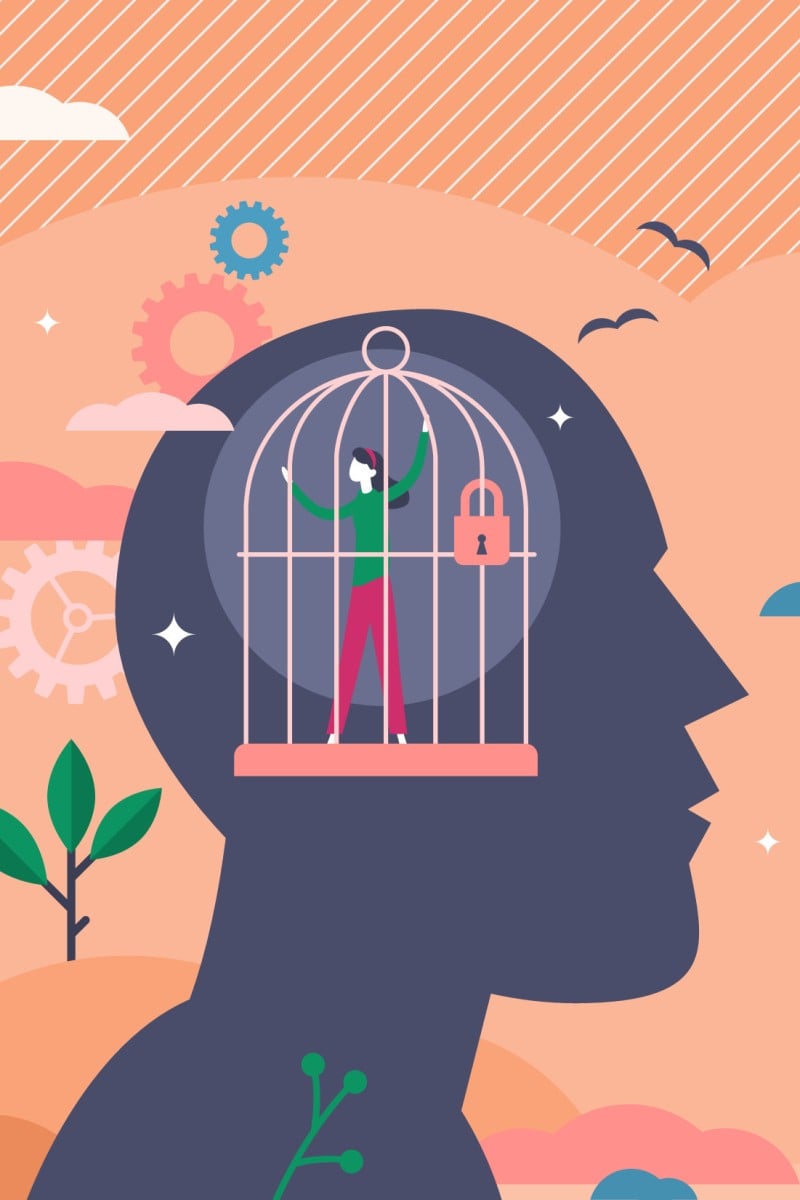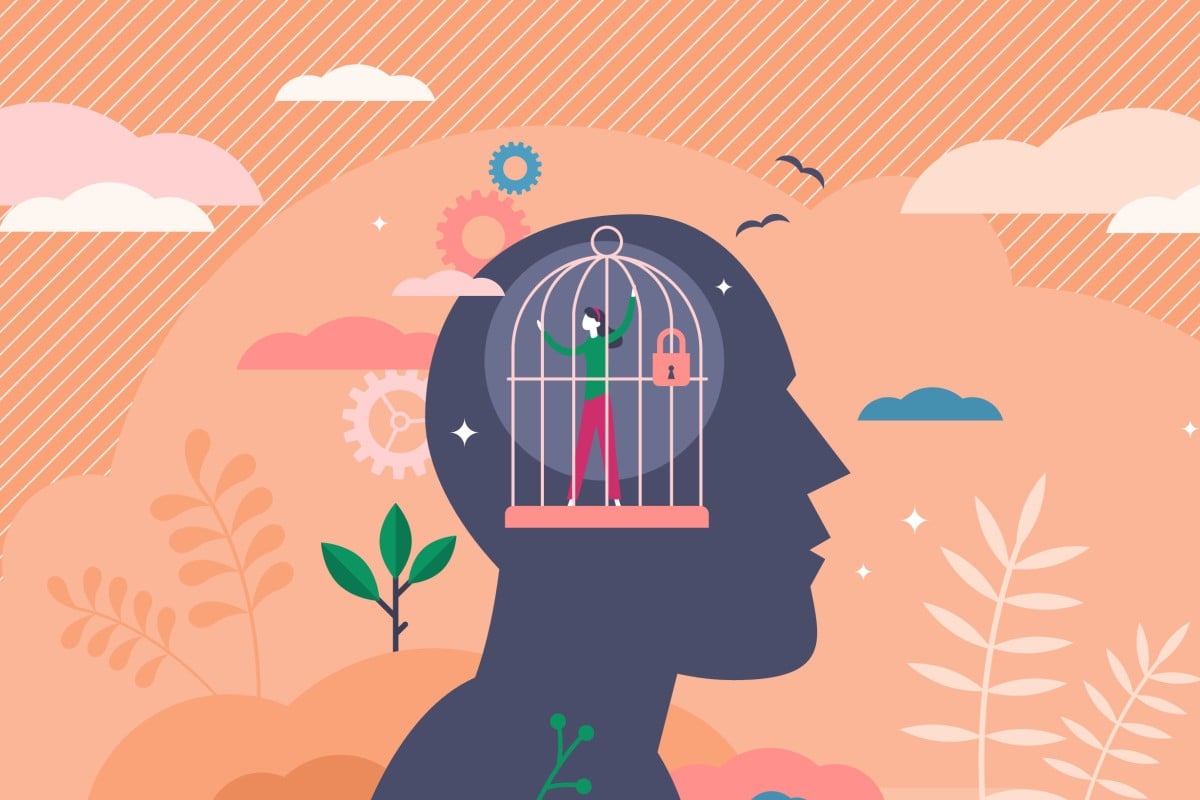
- Peter Chan Kin-yan, founder of Treehole HK, explains the psychology behind negative thought patterns and how to break free of these spirals
- Every week, Talking Points gives you a worksheet to practise your reading comprehension with questions and exercises about the story we’ve written
 If you ever feel stuck in your own head, you may have gotten caught up in a thinking trap. Photo: Shutterstock
If you ever feel stuck in your own head, you may have gotten caught up in a thinking trap. Photo: ShutterstockHave you ever failed a school exam and immediately launched into a spiral of thinking, “I am a loser” or “I won’t get into university”? Do you ever feel stuck in a negative thought loop you can’t escape? If so, you might have fallen into a “thinking trap”.
Thinking traps are negative thought patterns that affect how we see the world and make decisions. They can also have a significant impact on our mental health and well-being.
Peter Chan Kin-yan, the founder of Treehole HK, a company that promotes everyday psychology education and support, explained some of the thinking traps teenagers can get caught in and how to break free from these patterns.
“Traditionally, thinking traps refer to irrational thoughts that lead to bad consequences. But sometimes rational thinking can also prevent us from seeing things positively,” said the psychology educator.
Chan explained: “For example, a student with poor academic performance and no friends could analyse the situation and come to a reasoned conclusion that he is not doing well enough. But this might not help him work through the problem; instead of focusing on what has happened [in the past], he should think about what he could do in the future”.
“So all in all, thinking traps can be understood as thoughts that lead to dysfunctional [thinking and behaviour].”
Why teens get trapped
Exaggerated thinking patterns could be influenced by a person’s natural characteristics, social surroundings, or the environment they grew up in.
“If a person has elevated levels of neuroticism, they are more likely to experience negative feelings, such as anxiety, than other people,” said the educator, who graduated with a Bachelor’s degree in psychology from the University of Hong Kong. Neuroticism is when a person has a tendency towards anxiety, self-doubt and other negative feelings.
Teenagers are more likely to fall into thinking traps like overgeneralisation and black-or-white thinking, which are often related to interpersonal relationships.
The Hong Kong psychologist who uses Instagram to teach about dealing with tough feelings
“They are in a crucial transitional stage as their social circle changes from family to peers,” Chan said. “Many pupils I have met care about their self-image; they worry about how their friends [view] them.”
Overgeneralisation is when people make sweeping judgments about themselves or others, often based on a single experience. Chan gave an example: “When your friends hang out but don’t invite you, it’s normal to feel upset. But some students will over-interpret this and jump to the conclusion of ‘no one loves me’ because of a single incident.”
Similarly, black-or-white thinking is the tendency to think in extremes, jumping to harmful conclusions and ignoring other possibilities or outcomes.
When thinking traps become ingrained in a person, they can affect their core beliefs and mental health, leading to anxiety and depression. “Core beliefs refer to a person’s perception of themselves, others, and the world. So you can imagine that if a person’s core beliefs are [negatively] affected, it will lower their confidence and impact their daily life and psychological well-being.”
How to break free
Chan said the first step to escaping a thinking trap is to recognise your thought patterns. Start by learning what the different thinking traps are, so you can reflect and see if you have fallen into any of them.
“[Teens] can write down their thinking patterns and share them with friends to collect their thoughts. It’s similar to seeing a [therapist] ... just having someone there to listen is already very powerful,” he said.
Changing your behaviour by adapting new relaxation techniques, exercising, or practising mindfulness can also help you break free from negative thought patterns – even some you didn’t know you had.
And while it seems strange, another way to help you think positively is to notice and appreciate the negative thoughts without letting them affect you.
“Acceptance and commitment therapy encourages people to embrace their thoughts rather than fight against them,” Chan said. “Don’t force yourself to be positive. It’s OK to be not OK; the key is not to let those negative thoughts affect your life.”
Use our printable worksheet or online interactive exercises to test your understanding of this story.
